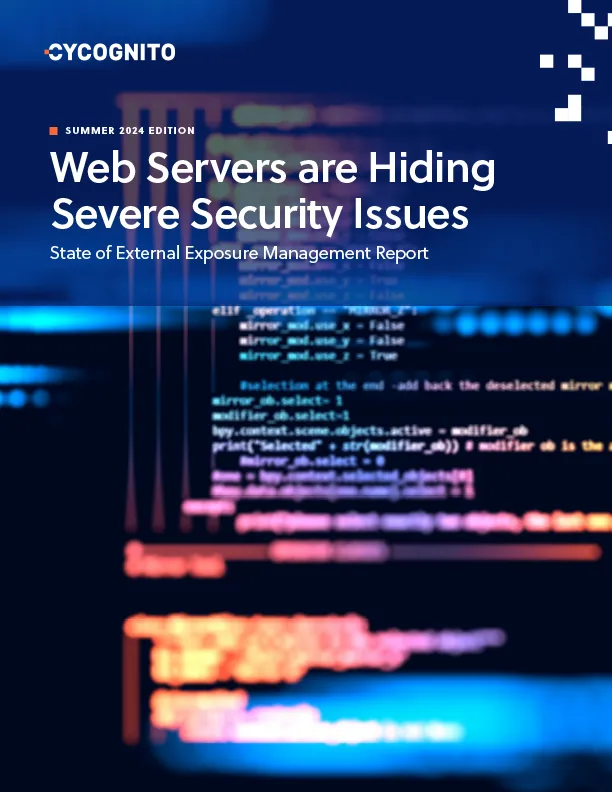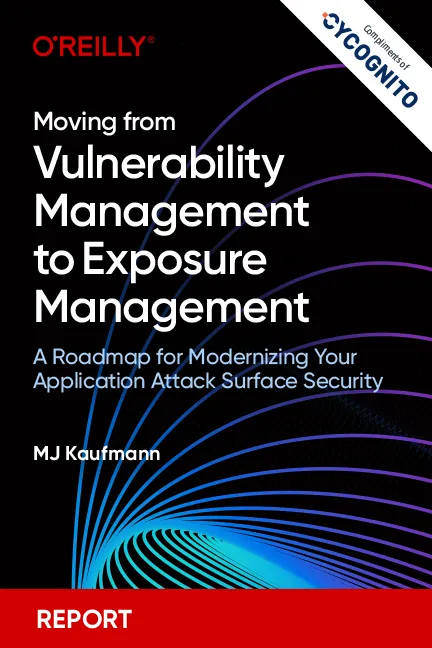Savvy security leaders are moving from the legacy framework of vulnerability management to the emerging framework of exposure management because it solves their biggest challenges.
The attack surface, which now contains cloud assets, distributed and mobile employees, and Internet of Things (IoT) integrated into every aspect of the workplace, is too complicated and changes too quickly to be managed with outdated methods and technologies. The pace of vulnerability identification is increasing, with over 28,000 issues cataloged by CISA in the last year alone. Despite innovations in scoring methods or the debut of alternate scoring techniques, security teams using vulnerability management have continued to fall behind the pace of attackers.
To help security leaders better understand the benefits of exposure management and how to implement it on their own attack surfaces, we partnered with O’Reilly to create “Moving from Vulnerability Management to Exposure Management: Modernizing Your Attack Surface Security.”
What is Exposure Management?
Exposure management, along with its accompanying framework Continuous Threat Exposure Management (CTEM), was introduced by Gartner to build a lifecycle of continuously identifying, assessing, and managing all exposures that attackers could exploit.
With growing complex attack surfaces, security teams need more visibility but without the avalanche of alerts that can come with. The solution is the first stage in the CTEM process: scoping. Integrated with the other four CTEM stages – discovery, prioritization, validation, and mobilization – scoping uses organizational context to identify the groups of assets that expose organizations to the most risk.
Scoping: Building the scope and defining context
Scoping requires building an understanding of an organization’s infrastructure, identifying the relevant assets, and establishing objectives consistent with the organization’s risk tolerance level. CTEM typically involves multiple scopes that can partially overlap and run simultaneously.
Discovery: Uncovering potential threats
This phase both identifies assets that may not have been monitored or adequately understood and tests them for issues that leave organizations exposed to risk. This is also the time to identify anomalies and gather intelligence about potential threats.
Prioritization: Weighing risks
Using context from the scoping and discovery phases, during the prioritization phase evaluates how much and what kinds of risks that the organization is actually exposed to. For example, a critical vulnerability affecting an unimportant asset may be less important than a less severe misconfiguration attached to a web server that collects PII or connects deeper into the organization’s internal infrastructure.
Validation: Verifying risks
Before proceeding with patching or other mitigation techniques, exposure management requires validating that identified issues are genuine and how attackers might exploit them. Security teams can use a variety of tools and techniques to accomplish this, including automated penetration testing.
Mobilization: Getting ready for mitigation
Now that threats have been identified, the organization can mobilize to mitigate them. This process involves allocating resources, identifying the individuals and teams responsible for acting, integrating with tools like SIEMs, and establishing a loop system to continuously monitor and iterate on successes.
Exposure Management Challenges and Solutions
Exposure management is a noisy space and it can be hard to get a handle on the framework, the tech requirements, and how best to implement it.
Security leaders concerned that adopting CTEM just means buying newtools can begin by focusing on how their existing tech stack can be adapted to fit the goals of CTEM. One thing is clear: CTEM does not require a particular technology or list of technologies, but rather is a framework that can be implemented and adapted to suit an organization’s needs.
To learn more about challenges security teams might face on their journey to exposure management, check out this report: “Vulnerability Management to Exposure Management: A Roadmap for Modernizing Your Application Attack Surface Security.” In it are concrete steps to evaluate your existing tech stack, how to create and execute a CTEM transition plan, and ways to assemble a team to champion this transition at your organization.
How Can CyCognito Help Your Organization?
CyCognito is an exposure management platform that reduces risk by discovering, testing and prioritizing security issues. The platform scans billions of websites, cloud applications and APIs and uses advanced AI to identify the most critical risks and guide remediation. Emerging companies, government agencies and Fortune 500 organizations rely on CyCognito to secure and protect from growing threats. Want to see how it works? Check out our website and explore our platform with a self-guided, interactive dashboard product tour. To learn how CyCognito can help you understand your external attack surface and exposed risks, please visit our Contact Us page to schedule a demo.
Emma Zaballos is an avid threat researcher who is passionate about understanding and combatting cybercrime threats. Emma enjoys monitoring dark web marketplaces, profiling ransomware gangs, and using intelligence for understanding cybercrime.









 Attack Surface
Attack Surface